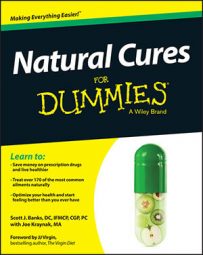Ringworm is a very common fungal infection (not caused by worms) that often appears in ring‐shaped patterns on the arms, legs, face, and torso. The fungi feed on keratin — a protein in skin, hair, and nails, and the resulting rash may be very itchy and thick, dry, and scaly.
Ringworm can also affect other parts of the body, including the feet (causing athlete’s foot), finger nails and toe nails (causing onychomycosis), the groin area (causing jock itch), the hands, or the scalp. If ringworm affects your fingernails and toenails, they can have a discolored or crumpled appearance. Ringworm is also contagious; it can spread through direct physical contact with affected persons or pets.
If you’ve contracted a case of ringworm, try the following natural cures:
Garlic: Peel a clove, slice it thin, place the slices on the affected area(s), and cover with a bandage overnight.
Apple cider vinegar: Using a cotton ball, apply apple cider vinegar to the ringworm three to five times daily until the ringworm disappears.
Tea tree oil: Dilute tea tree oil with an equal amount of water and apply it to the affected skin several times daily for several weeks.
Turmeric: Make a turmeric poultice and apply it to the affected skin several times daily for several weeks.
Salt and vinegar: Make a paste of salt and vinegar and apply the paste to the affected area several times daily for one or two weeks.
Aloe: Apply gel from the leaf to the ringworm several times daily.
Bioactive colloidal silver: Apply colloidal silver as a liquid, gel, or ointment several times a day until the ringworm disappears.
Lavender oil: Apply the oil to the affected area several times daily. Lavender oil has powerful antifungal properties.
Supplement any topical treatments by ingesting one or more of the following:
| Supplement | Dosage |
|---|---|
| Olive leaf extract | 200 mg twice daily |
| Grapeseed extract | 100 mg twice daily |
| Grapefruit seed extract | 100 mg twice daily |
| Monolaurin | 200 mg twice daily |
| Lemongrass tea | Drink several glasses daily; place the used teabags on affected areas and let them dry out |
If symptoms don’t improve over the course of several days, turn to conventional treatments. Several over‐the‐counter creams — including miconazole, terbinafine, clotrimazole, ketoconazole, and tolnaftate — when applied to affected areas of the skin, have proven effective in treating ringworm. Continue treatment for an additional week after the ringworm appears to be gone.
Fungi love warm, moist surfaces such as those found in locker rooms, showers, tanning beds, swimming pools, and skin folds. Avoid sharing sporting equipment, clothing, or towels. You can also contract ringworm from an infected dog or cat, so if you have a dog or cat, have it checked and treated to avoid getting re‐infected.
You’re at a greater risk of contracting ringworm if your immune system is weak, which is common in the very young, very old, and those who have diabetes or are obese.

